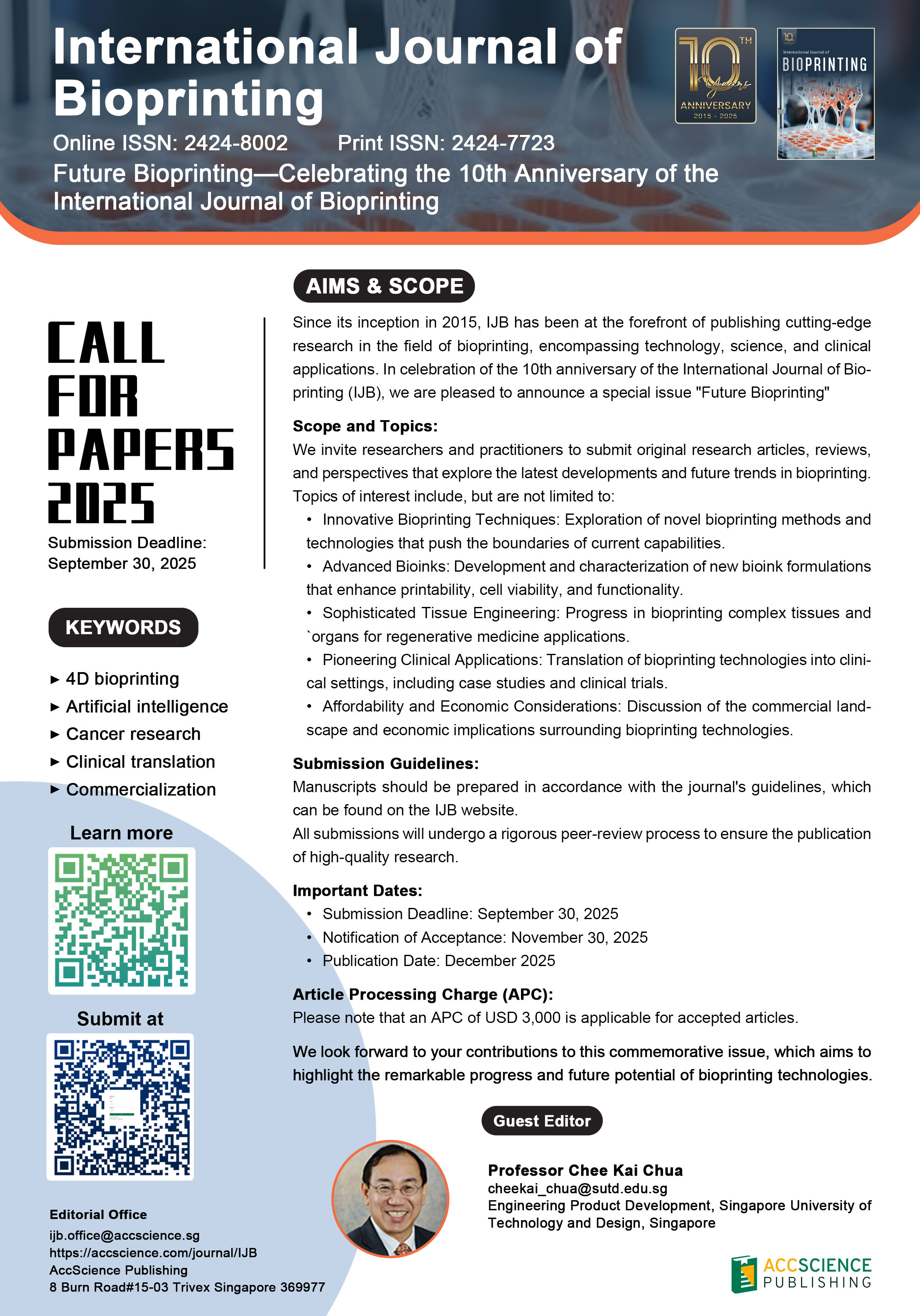
Since its inception in 2015, IJB has been at the forefront of publishing cutting-edge research in the field of bioprinting, encompassing technology, science, and clinical applications. In celebration of the 10th anniversary of the International Journal of Bioprinting (IJB), we are pleased to announce a special issue "Future Bioprinting"
Scope and Topics:
We invite researchers and practitioners to submit original research articles, reviews, and perspectives that explore the latest developments and future trends in bioprinting. Topics of interest include, but are not limited to:
- Innovative Bioprinting Techniques: Exploration of novel bioprinting methods and technologies that push the boundaries of current capabilities.
- Advanced Bioinks: Development and characterization of new bioink formulations that enhance printability, cell viability, and functionality.
- Sophisticated Tissue Engineering: Progress in bioprinting complex tissues and `organs for regenerative medicine applications.
- Pioneering Clinical Applications: Translation of bioprinting technologies into clinical settings, including case studies and clinical trials.
- Affordability and Economic Considerations: Discussion of the commercial landscape and economic implications surrounding bioprinting technologies.
We look forward to your contributions to this commemorative issue, which aims to highlight the remarkable progress and future potential of bioprinting technologies.
Recent advances in 3D bioprinting for cartilage and osteochondral regeneration
Macro–micro analysis of the physical and biological properties of 3D-printed hydroxyapatite/β-tricalcium phosphate scaffolds with varying polyvinyl alcohol concentrations
Hyaluronic acid-based self-healing hydrogels with enhanced hydrolytic stability for 3D bioprinting in tissue engineering
Synergistic bone regeneration by surface-modified 3D-printed PCL/β-TCP scaffolds in various animal defect models


